Our final article in this series will deal with the last days of the Khmer Rouge. What’s more, this article is going live on the 17th of April, the anniversary of the Khmer Rouge’s seizing of power! Feel free to take a moment of silence for the victims or celebrate in a barren field of bones, depending on your inclination.
If you’re just seeing this now, you should check out the full series so you have proper context! Assuming you have an hour or two free anyway. I began with their origins and then covered the civil war. After that, I documented their blood-soaked regime of Democratic Kampuchea and now I’m documenting what happened after that regime got overthrown. If that’s not enough to sate your interest, we have many, many more articles on the subject right here! Without further ado, let’s get this ball rolling.
Table of Contents
- The Post-Collapse Khmer Rouge
- The Rest of Cambodia
- China Invades
- The Second Cambodian Civil War
- The Factions Unify
- Civil War Continues
- The Peace Process
- The First Elections
- The Struggle for Unity
- Pol Pot Falls
- It All Ends
The Post-Collapse Khmer Rouge
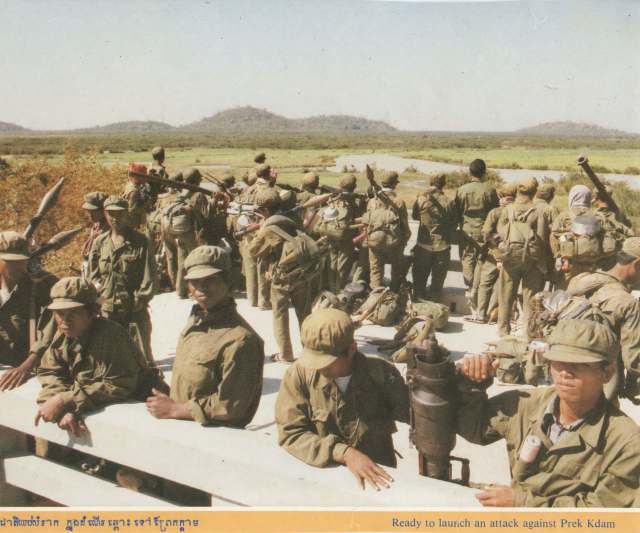
So given everything we’ve talked about regarding the Khmer Rouge and how awful they are, you’re probably wondering how such a regime could survive in any respect after their collapse. After genociding half their country and improving very few lives, what mandate did they have? Well, the very same mandate that earned them support from the outset. And it certainly wasn’t a socialist mandate. More than anything, it was the romanticization of the extremely rural Khmer lifestyle and a seething nationalist hatred for Vietnam, even if they were the nation’s liberators.
The Khmer Rouge retreated from the oncoming Vietnamese to the dense, mountainous and rural regions of Western Cambodia along the border with Thailand which granted asylum to many key Khmer Rouge leaders. From there, the same forces that were crushed in the initial invasion now held a strategic high-ground and were able to hold territory and begin a long-running insurgency against the ‘Vietnamese aggressors’.
The territory was sparsely inhabited, but those who did live there were more inclined to support the Khmer Rouge. Their traditional lifestyle was already largely in line with their policies and they were adapted to self-sustainability, making the region suffer less from the arduous famines of the Khmer Rouge rule.
By 1980, the estimated military capability of the Khmer Rouge was 35,000 with a further 100,000 civilian inhabitants of their territory. This enabled their survival, but not exactly success. Cut off from about 90% of Cambodia and with the insurgency leading to a renewed famine, the iron-grip of the party loosened to allow people to cross into Thailand for food and medical assistance. This is a luxury notably not afforded to the rest of Cambodia, but we’ll get into that.
The Rest of Cambodia
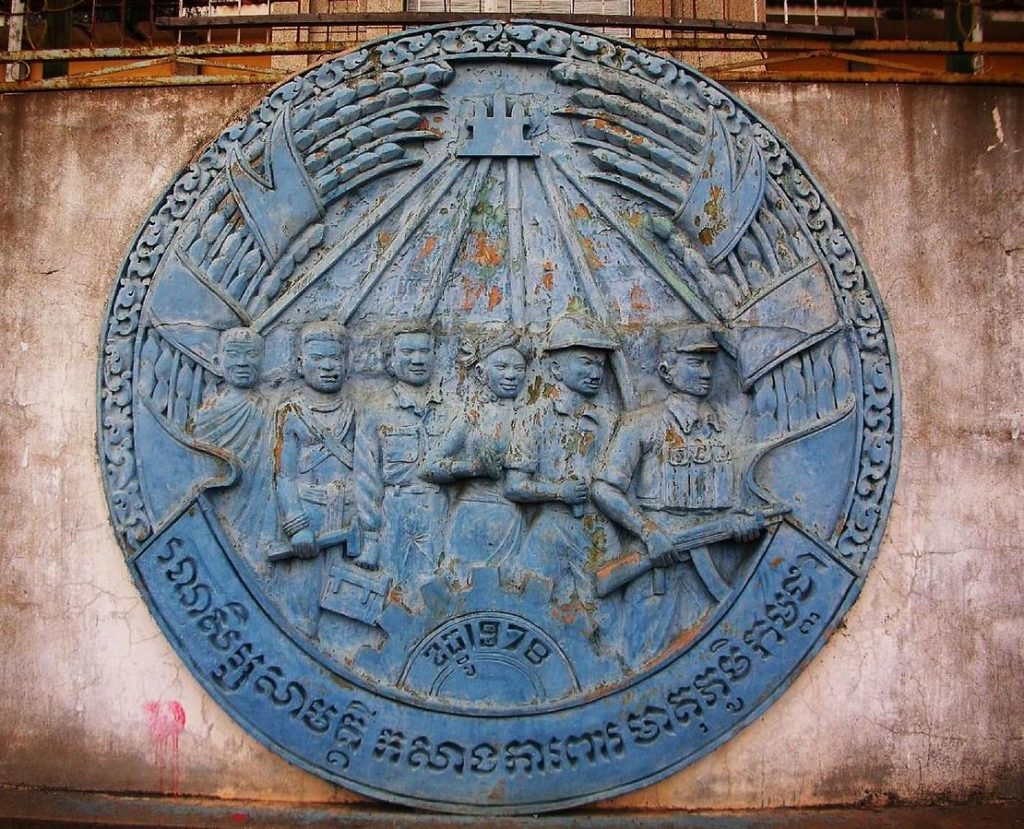
With the Khmer Rouge decisively defeated in the vast majority of Cambodia, one might expect an immediate surge in living standards… Sadly it was not to be. Problems started almost instantly on the international stage. While you could hardly say the Khmer Rouge had many international allies, they did hold Cambodia’s seat at the United Nations. And for as reviled as they were, the west hated Vietnam even more. The invasion and overthrow of a country was an easy means of attack and the Khmer Rouge representatives called on the long-ignored prince Norodom Sihanouk to present a case on their behalf.
And he did. He argued that while he too reviled the atrocities of the Khmer Rouge, the Vietnamese invasion and subsequent Cambodian government were nothing more than an imperialist power-grab and so they should be regarded as illegitimate. The Soviet Union and eastern bloc allies (minus Romania) argued against this and recognized the new government while China and western powers almost unanimously continued to recognize the Khmer Rouge’s rule and allowed them to maintain their seat at the UN.
The big issue here, or at least one of them, is that this severely impacted both Vietnam and Cambodia’s positions on the world stage. Most notably, with every geographic neighbor still recognizing the Khmer Rouge, trade sanctions placed against Vietnam crippled much needed food-aid for there, while even NGO’s struggled to operate in Cambodia because their countries officially did not recognize the legitimacy of the government there. Most food and medical aid was solely to refugee camps on the Thai border, many of which were de-facto controlled by the Khmer Rouge.
Famine not only continued but escalated. What little state infrastructure had existed under the Khmer Rouge promptly collapsed. Hundreds of thousands had been displaced over the course of Khmer Rouge rule and were lost and isolated, in barren areas now rife with guerrilla warfare. Many had no homes to return to and the collapse of the village commune system collapsed the already dismal rice harvest. It’s been estimated that from the fall of the Khmer Rouge in January of 1979 to 1981, anywhere up to 500,000 died of starvation and disease.
China Invades
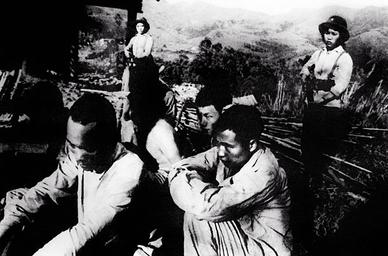
As though things couldn’t get any worse, it turned out they absolutely could. On the 17th of February 1979, China invaded Vietnam. Vietnam’s success in Cambodia was only a little over a month old and a focus on reconstruction was desperately needed, especially in light of international backlash. All this was thrown into utter turmoil as military forces dedicated to rooting out Khmer Rouge remnants and securing Cambodian territory had to be diverted to fight off the Chinese aggressors.
At this time, China was a very different place already. Mao was dead, the cultural revolution was essentially over, the ‘Gang of Four’ had been arrested and leader Hua Guofeng was taking a contradictory line of appeasing the reformers like Deng Xiaoping while also claiming to uphold Mao’s legacy. In light of this, the often-stated claim that China was trying to ‘aid Maoist revolutions like the Khmer Rouge’ falls a little flat. Around the same time, China was dropping support for Maoist-inspired insurgencies throughout the region and strengthening ties with the USA. If anything, the real reason can be found by looking to the USSR.
China and the USSR had an extremely rocky history, with struggles for influence in south-east Asia being a major part of that. The USSR had signed a defense treaty with Vietnam not long before, which had given Vietnam the belief that consequences for the Cambodian invasion would never be military. But while China had devoted around 100,000 troops to the invasion of Vietnam, an astonishing 1.5 million troops were placed along the Soviet Union’s border, with Deng Xiaoping stating on the day of the Vietnamese invasion that any Soviet interference would be met with a full-scale war. By interesting coincidence, this was the day after the expiration of the Sino-Soviet Friendship treaty that prevented the attack of Soviet allies.
With cards firmly on the table, the Soviet Union backed down. While it provided Vietnam with hardware and logistical assistance, it refused to directly intervene militarily, leading to China to repeatedly proclaim that the Soviet Union could not keep its promises. This was the true goal of the invasion, to massively politically undermine its long-time rival. Even more telling is that the war lasted less than a month, with both sides claiming victory.
This invasion was a mere punitive measure, not an actual attempt to rescue the Khmer Rouge. Many thousands died on both sides and the Vietnamese economy was further crippled, to compound on its international isolation, but fundamentally there had been no change. Besides the continued plight of the Cambodian people being made all the worse.
The Second Cambodian Civil War
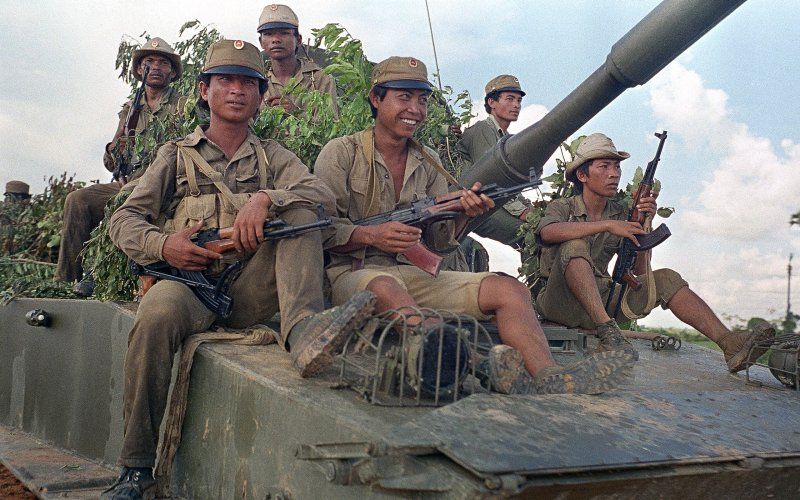
With all these problems afflicting Cambodia and Vietnam’s presence being questionable by so many, it’s hardly surprising that a civil war soon broke out. Though you may argue that the Khmer Rouge’s army was nowhere near strong enough and had nowhere near a strong enough mandate to pose a real threat to Vietnamese and post-Khmer Rouge Cambodian rule. This is true. Which is why there were other factions involved too.
Given both the Khmer Rouge and the Vietnam-backed government were nominally socialist, there was a massive opening for right-wing forces to develop who wanted to shift Cambodia back towards monarchy or even just towards pro-western capitalism. Or really, anything that just wasn’t flying a red flag. To this end, many small rebel groups began cropping up in the power vacuum left by the Khmer Rouge which slowly coalesced into the Khmer People’s National Liberation Front. (KPNLF). Its existence was officially proclaimed on October 9th of 1979, less than a year after the Vietnamese invasion and with a force of about 2,000.
This force began waging war against the new Cambodian state and Vietnamese occupiers, gradually gathering support and receiving its first batch of weapons from none other than China, further solidifying that their opposition to Vietnam had nothing to do with inherent Khmer Rouge support. In 1982, the group attracted American interest and began receiving approximately $5 million in aid per year, a number which increased to $12 million by 1987.
Following this was the founding of FUNCINPEC (National United Front for an Independent, Neutral, Peaceful and Cooperative Cambodia), founded by none other than disgraced prince Norodom Sihanouk who had broken ties with the Khmer Rouge at long last. They were officially formed on the 21st of March in 1981 in, uh… Pyongyang, north Korea. So now Vietnam and their Cambodian allies were besieged by three rebel groups being armed by the west and China, while also having to divert resources to their own struggling economy and maintaining the Vietnam-China border in case another invasion occurred.
To deal with this, the Peoples Republic of Kampuchea began conscripting troops… Many of which deserted due to low pay and poor morale, further exacerbating the problem. Defectors flooded all three rebel groups who coalesced along the Thai border, in refugee camps that swelled to over 500,000 people. Within, corruption ran rampant.
The patchwork nature of the anti-communist coalition forces made them a nightmare of corruption. Within the KPNLF were ethnic minority forces, Islamic guerrillas, former Lon Nol loyalists, royalists and many more. These groups overwhelmingly controlled the refugee camps on the Cambodian side of the border and reportedly operated as fiefdoms and even bandits, disillusioning Cambodians who had already been disillusioned by the Vietnamese.
And where did this lead them? To the waiting arms of the Khmer Rouge. Despite their vicious history that all knew only too well, the Khmer Rouge were a unified force and had a degree of actual governance. Ironically, the horrific genocidal regime were comparatively lacking in corruption, and so the Khmer Rouge’s forces swelled, forming a much stronger opponent to the Vietnamese.
The Factions Unify
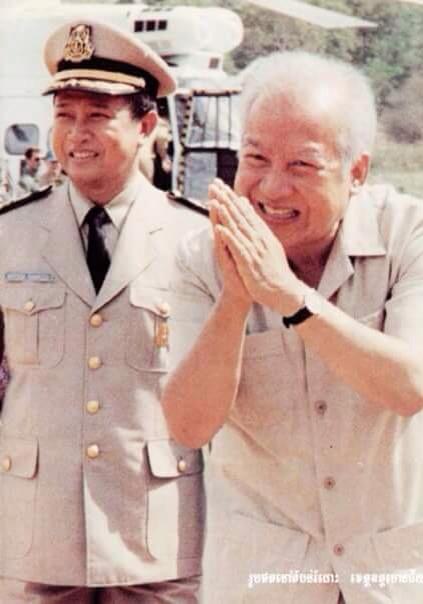
The rebels faced an unavoidable problem. The smallest and most fractured forces were the best armed while the largest and most unified force was getting mere trickles of supplies from China. This stalemated the conflict for its first few years while the anti-Khmer Rouge rebels attempted to negotiate vacating the Khmer Rouge’s UN seat which would grant them more influence. This was ultimately a failure.
China began pressuring Sihanouk to once again ally with the Khmer Rouge… But how could he do that? This wasn’t like the early 70s where people weren’t as sure what the Khmer Rouge actually was. The differences were irreconcilable. And yet, talks began between not only Sihanouk’s forces and the Khmer Rouge, but with the explicitly anti-communist KPNLF too! How was that supposed to work? They explicitly existed in opposition to the Khmer Rouge as well as Vietnam!
By November of 1981, an attempted coalition with equal decision-making power for all three forces was suggested and fell through. The Khmer Rouge knew damn well that they had far less in common with the other two than they had with each-other. They would be a minority voice! In February of the following year, Sihanouk met with Khieu Samphan representing the Khmer Rouge and a deal was worked out… Or rather, he accepted Samphan’s deal.
The agreement was for a coalition. One in which none of the rebel forces would integrate and their official united platform was to defend the legitimacy of Democratic Kampuchea, that is, the Khmer Rouge’s rule. In exchange, the government itself would be reformed into a coalition one rather than an exclusive Khmer Rouge body… Which you might notice is much like the GRUNK that existed right before the Khmer Rouge overtook everything in the early 70s.
On the 22nd of November 1982, the Coalition Government of Democratic Kampuchea was established. The government cabinet established Sihanouk as president of Democratic Kampuchea, Khieu Samphan as vice-president in charge of foreign affairs and KPNLF leader Son Sann became Prime Minister. Now, how the fuck did this political coalition function? We’ll go into it later…
The key point to take away from this is that all three armies remained independent of each-other but nominally allied. The two non-Khmer Rouge groups now had political legitimacy and foreign funding increased dramatically, with the likes of America now functionally funding the Khmer Rouge itself, which on the surface should be a completely contradictory interest.
Civil War Continues
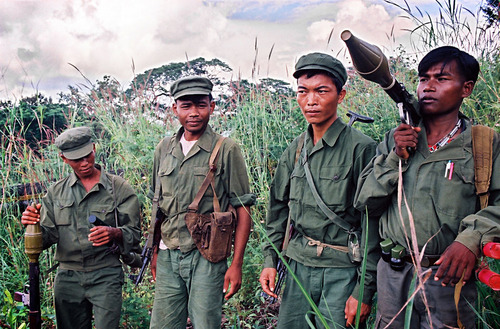
Ultimately, these political gains came too little too late. While major military gains followed in the subsequent two years and instability rocked the PRK, Vietnam had re-established itself by 1985 and began launching increasingly successful raids into rebel territory. Much like in the first civil war, the non-Khmer Rouge combatants faded into irrelevancy while Khmer Rouge cadres remained the only successful military force. Unlike the first civil war, the Khmer Rouge never regained the advantage. The 1985 offensive drove the Khmer Rouge into Thai territory and Vietnam began sealing the border by destroying the jungle, placing mines, barbed wire and more. The Khmer Rouge leadership was now in exile.
This same year, perhaps to consolidate more support, Pol Pot relinquished leadership of the Khmer Rouge in place of Khieu Samphan, who already was the highest political figure in their pseudo-coalition government. Whether this meant anything in practice is debatable. By most accounts, Pol Pot remained a highly influential figure within the organization.
Vietnam, wishing to put this whole mess behind them and withdraw, proposed a political settlement which excluded the Khmer Rouge from power. Every power from the coalition to China and even the United States refused this. Despite this refusal, Vietnam wanted out anyway. In 1985, having kicked the Khmer Rouge out of their border camps, they announced a withdrawal by 1990 and to allow the Peoples Republic of Kampuchea to shoulder the burden themselves. You might notice this is pretty much the same policy the Soviets had when withdrawing from Afghanistan.
Despite this, there’s reason to believe the Cambodian state was safe. Estimates in 1989 suggest that the Khmer Rouge’s military numbered around 35,000 with a few thousand more in the other two rebel groups. Meanwhile, the People’s Republic of Kampuchea’s military numbered around 150,000. They were losing the civil war. With the rapid ending of the Cold War itself, their political relevance too was in serious jeopardy.
The Peace Process
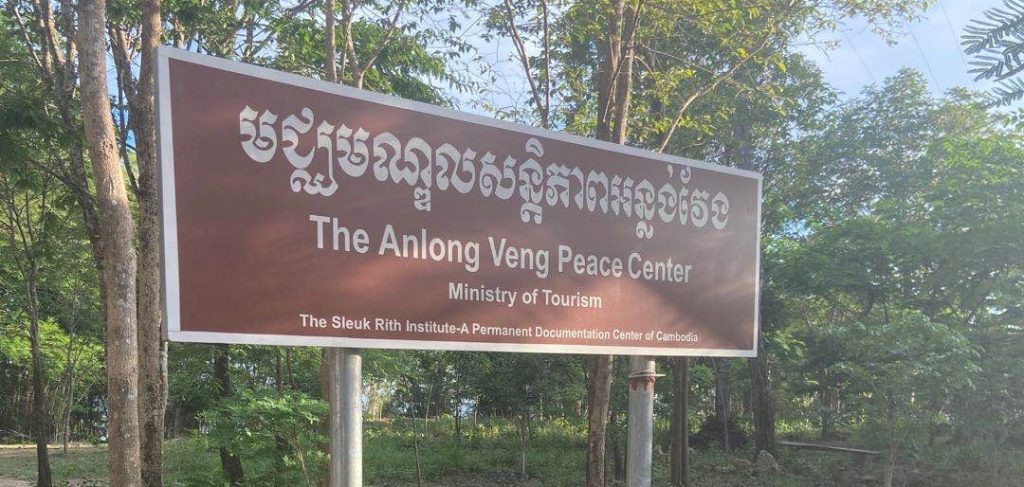
In 1987, Sihanouk began reaching out to the People’s Republic of Kampuchea to reach a peace settlement. This created unease in the Khmer Rouge as fears arose that the two right-wing parties in their coalition would break away and defect to attack them. In May of 1989, a compromise was on the cusp of being reached, in which the PRK would rename itself to the State of Cambodia and the People’s Revolutionary Party of Kampuchea would become the Cambodian People’s Party, although it did not sacrifice its one-party domination.
The Khmer Rouge, along with China and the US, opposed Sihanouk’s attempted settlement and the peace agreement was called off. Despite this, the Cambodian government continued in its reforms and began reintroducing Buddhism as the national religion, opening free market enterprise and realigning itself as a non-aligned state rather than a part of the Soviet sphere of influence.
Almost immediately after Vietnamese withdrawal, which was completed in late 1989, earlier than anticipated, the Khmer Rouge began an offensive and seized wide swathes of western Cambodia, establishing themselves in territory far wider than their previous refugee camps. A new capital was set up in Anlong Veng, serving as the new home of Pol Pot and where the weak Cambodian government could not reach.
Just as quickly as these gains were made, they stalled once more. Taking border towns was a major escalation, but the success in Cambodia’s interior was far less successful. Even worse, by 1990 the cold war had largely ceased to be, with the USSR withdrawing support to Cambodia just as China withdrew support from the Khmer Rouge. Without Soviet interference, Sino-Vietnamese relations rapidly normalized and the Khmer Rouge became irrelevant. Once more, a peace settlement was being pushed for.
In early 1991, the Chinese line changed from certain inclusion of the Khmer Rouge in any subsequent government to inclusion depending on free and fair election success. This spelled the doom of any coalition.
The First Elections
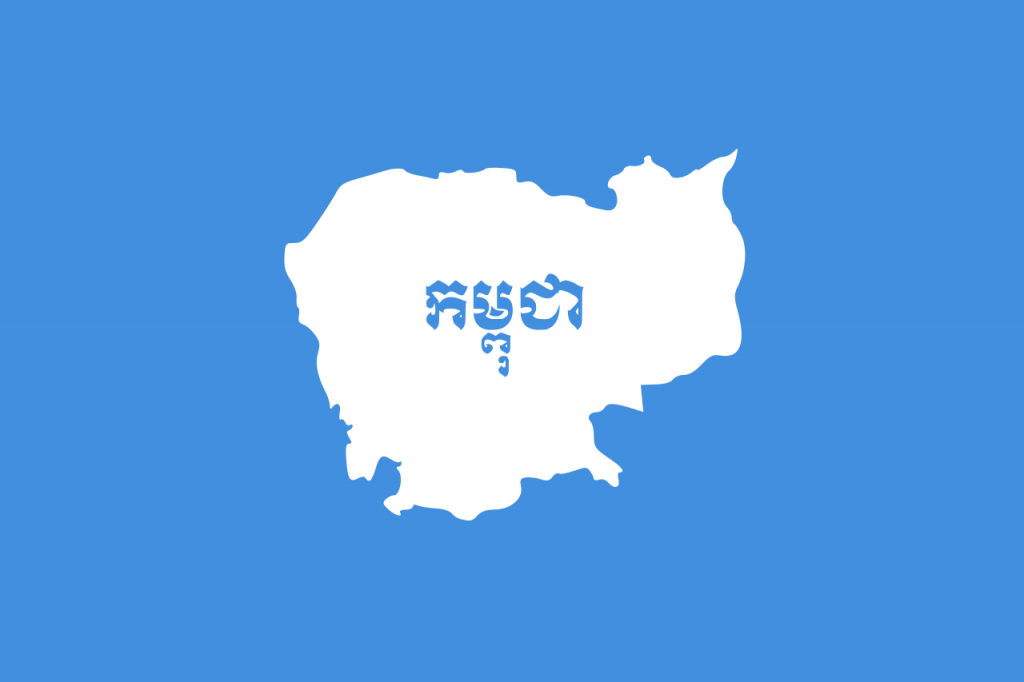
On October 23 of 1991, the Paris Peace Agreements were signed. Quite uniquely for the time, part of the agreement was not only that the Cambodian government would allow for free and fair elections, but the government would invite the United Nations to take over as the legal Cambodian government for the duration of these elections. Over 46 nations contributed military personnel to this process and the rebel groups sat in the wings, anxiously awaiting results.
Notably, to attain this result, the coalition government led by the Khmer Rouge at last relinquished its UN seat and official claim to political power, instead casting its lot electorally. All sides were suspicious of the UN’s ability to preserve the uneasy power balance and while the Cambodian military was successfully disarmed, the Cambodian state remained the de-facto authority for around 80% of the population. This meant that the UN’s success in carrying out these elections was predicated on the Cambodian government’s compliance. The Khmer Rouge and others were in a far weaker bargaining position.
Even worse, the return of the Khmer Rouge to Cambodia’s interior faced enormous backlash. Khieu Samphan returned on the 27th of November 1991, arriving in Phnom Penh where a political campaign office was waiting for him. As soon as his flight touched down, he was besieged by angry protesters who hurled insults and objects at his car. As he arrived at his office, a mob began storming the building and attempting to lynch him from a ceiling fan. Barely escaping with his life, he immediately fled the capital.
After erring for a long period over the necessary disarmament to partake in elections, the Khmer Rouge ultimately realized that disarming would mean certain failure in subsequent elections and the full relinquishing of all power and authority. They at last broke from the agreement and continued their conflict. Meanwhile, the other coalition partners of their now illegitimate government broke away to participate electorally, disbanding their armed groups and leaving the Khmer Rouge as the sole military force against the UN and the Cambodian state.
A new party was set up, the National Union Party of Kampuchea, once more attempting to present itself as a unifying force even with no more allies. The Khmer Rouge resumed its offensives and began carrying out massacres of Vietnamese inhabitants, once again trying to prey upon the ethno-nationalism of a Cambodian minority fearful of Vietnamese domination.
Despite all this, the Khmer Rouge could not prevent the election from going ahead. The territory they controlled in absolute terms was tiny, while areas they had influence over still partially participated in elections. Sihanouk’s party, now led by his son, received 45.5% of the vote in an election with 90% participation. Following right behind, Hun Sen’s Cambodian people’s Party gained a 38.2% voter share, solidifying them as the opposition.
On the 24th of September 1993, a new constitution was put into effect which officially established the government as a multi-party liberal democracy with a constitutional monarchy, elevating Norodom Sihanouk to King, while his son and former Vietnamese-backed leader Hun Sen became First and Second Prime Ministers. In July of 1994, the Khmer Rouge was excluded from any further elections and officially outlawed, with the government declaring their regime as genocidal, which had previously been shied away from to preserve the coalition.
The Struggle for Unity
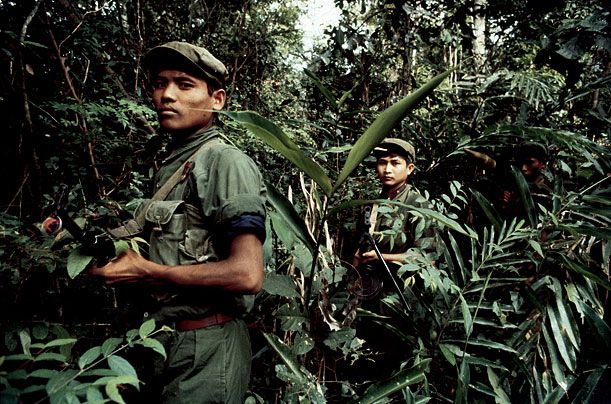
One thing to note about the Khmer Rouge at this time is that its demography had shifted dramatically since 1979. While the leadership had remained static, with the former Democratic Kampuchea government at its head, many rank-and-file Khmer Rouge cadre were children at that time and had a very different perspective. Given they were not at all complicit in the Cambodian genocide, many saw themselves as victims of the Khmer Rouge and simply wished for a way to re-enter into Cambodian life. The elections seemed like a great means of doing this. The collapse of the elections in Khmer Rouge territory led to major disappointment.
Formerly hardline Pol Pot loyalists Son Sen and Ieng Sary were removed from their posts in 1993 due to their support of the peace process, with the Khmer Rouge now led almost entirely by Pol Pot, Khieu Samphan and Ta Mok. While initially this secured the hardline will of the Khmer Rouge leadership, it sowed the seeds of discontent that would later be reaped.
Before the new Cambodian government could be established, the UN did as it often does and restrained any effort of fight-back, allowing the Khmer Rouge to expand its violent influence further than ever before since the fall of its regime. Despite this, it translated to very little tangible gains as they could not hold territory where they were reviled, and their international recognition had fallen to essentially nothing.
Khieu Samphan attempted to negotiate with the new government to gain political power in exchange for peace, bypassing the electoral process but this was unacceptable. At last, the Khmer Rouge broke off all hope of reconciliation and focused purely on its war efforts. The Khmer Rouge declared its new government, the Provisional Government of National Union and National Salvation. While this strategy may have worked with a literal prince on their side, as the sole force in this government, they gained little legitimacy from the move.
In order to quell the discontent within the party, the Khmer Rouge once more relied on old tactics of sheer brutality. Recognizing their ‘liberalization’ in the 80s as a political error (or at least deciding that it was no longer useful), a mass purge of cadre began. Hardliners led by Ta Mok began a reign of terror in Anlong Veng, with a reported 3,000 being executed in the first post-collapse killing field just outside of town between 1993 and 1997.
No longer having foreign patronage, they began to reassert ‘self-reliance’ strategies that saw a gradual decline in living standards within their territory. Private connections established in Thailand proved useful, as Thai companies were invited to Khmer Rouge territory for mass logging and digging for natural resources. The Khmer Rouge had also made smart real estate investments in Thailand’s economy and drew around $100 million per year from these various ventures. Not quite what one expects from an allegedly socialist revolutionary force, but y’know.
Other Khmer Rouge areas without such connections resorted to petty banditry to support themselves, becoming as reviled as the KPNLF bands along the border refugee camps before them. Defectors became a much more steady stream and brutality was the only understood method of handling such a problem. The ideological unity had fractured and the authority of Pol Pot’s clique as slowly and silently dissipating. Even the Vietnamese were now long gone, so why exactly were they fighting anyway?
Pol Pot Falls
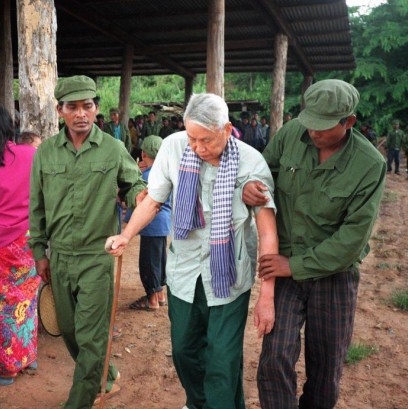
The war intensified and territory was repeatedly lost and regained, but any true advances were never successful. When the party center attempted to reassert more control over Pailin province, where the ousted Ieng Sary was now a regional leader, he at last fought back against the leadership’s demand and was denounced as a traitor. When Pol Pot sent an expedition to capture and execute the traitor, for perhaps the first time, he was unsuccessful in his power struggle. His expeditionary force defected, with those that fought being wiped out by regional forces who became loyal to Sary.
Ieng Sary at last opened negotiations with the government and demanded a royal pardon along with continued control of his province in exchange for swearing loyalty to their state and surrendering his Khmer Rouge faction to the government to rejoin against Pol Pot. On the 9th of September 1996, this agreement was accepted and Ieng Sary became a vocal opponent of Pol Pot, claiming that he had never supported him to begin with. Defections in the Anlong Veng-led territory only increased from here.
The Khmer Rouge then received an unexpected lifeline. Sihanouk’s son, Prince Rannaridh, had been running the FUNCINPEC as the first prime minister with a larger mandate than Hun Sen’s party. Yet, he had been consistently outmaneuvered and the Cambodian People’s Party began to swell its influence. His allies in Thailand advised him to re-create the coalition government with the Khmer Rouge and break the coalition with Hun Sen, in theory uniting the Khmer Rouge’s military potential with the vast support base of royalists. He duly sent negotiating teams to Anlong Veng, albeit with one condition. He would unite with Khieu Samphan. But not Pol Pot.
The position of Pol Pot was obvious. His authority had already been massively undermined. Many Khmer Rouge cadres simply wished for the war to be over in such a way that they were not fearing persecution and a Khmer Rouge without him could provide a new lease on life for the beleaguered movement. Recognizing this, he began yet another violent purge in June of 1997, arresting Khieu Samphan and executing Son Sen, leaving him and Ta Mok. But it was here that he pushed too far. He attempted to arrest Ta Mok as well.
His men were unsuccessful and at last, his ardent ally turned on him and ordered the arrest of Pol Pot, forcing him to flee into the jungles. He was captured and brought to a public trial on the 25th of July 1997. He was denounced as a tyrant and a genocidal monster by his own party and strongest allies and finally sentenced to a life of house arrest. Ta Mok at last began negotiations with Sihanouk’s son.
Hun Sen had not been waiting in the wings during all of this. Recognizing that his own coalition was now uniting with the Khmer Rouge against him, bloody street battles between the two governing forces began with over a hundred killed and Hun Sen emerging victorious, burying the potential of a Khmer Rouge-royalist coalition. Recognizing this, Ta Mok’s soldiers revolted against him and forced a mere few hundred Khmer Rouge hardliners into the jungle, taking Ta Mok and Pol Pot with them. The remaining forces negotiated their surrender in exchange for amnesty, leaving these few hundred disgraced rebels as the sole outliers in the Khmer Rouge.
It All Ends
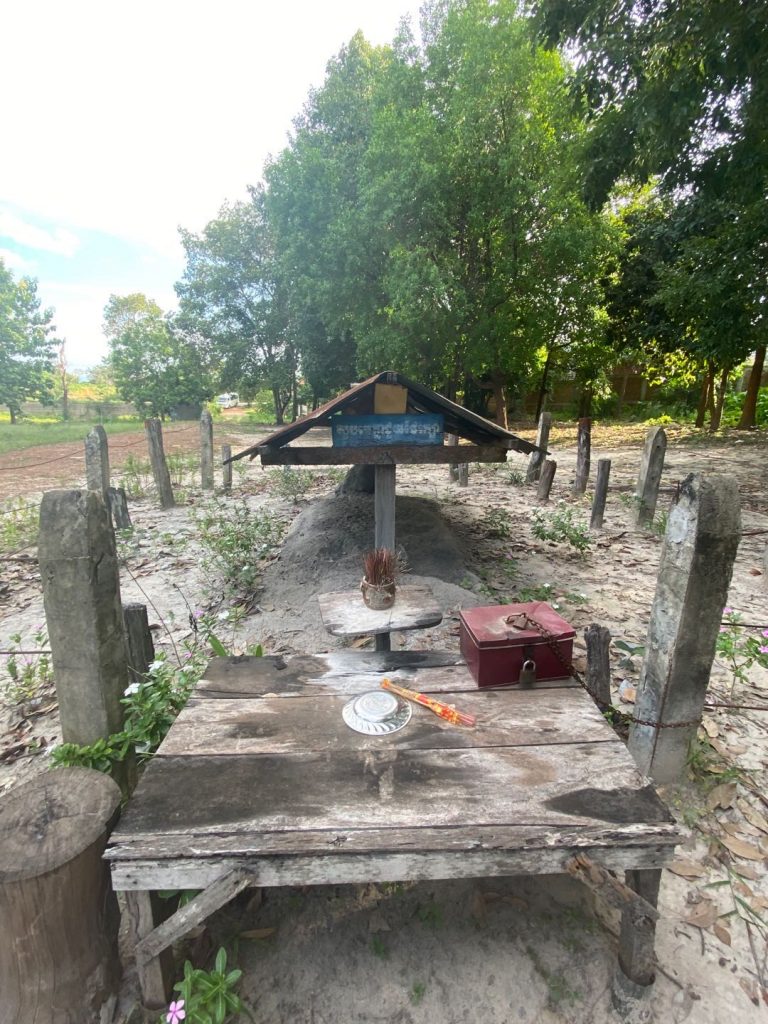
Still imprisoned by Ta Mok, Pol Pot finally died on the 15th of April 1998. How he died, we don’t know, but he was an old man in ill health and whether it was murder or a heart attack is effectively immaterial. On the 6th of March 1999, Ta Mok himself was captured by Cambodian forces, leaving the Khmer Rouge without a leader. The remnants simply dissolved and the Khmer Rouge was no more.
This incredibly long history can be expanded further, but I feel like this is surely enough for now… At least on the historical side of things. The political side is to come. Even with masses of foreign political support, ample opportunity for peace settlements, political bargaining everywhere, foreign financial support and ample opportunities for any kind of negotiated peace, Pol Pot’s clique simply could not take advantage of any of it. Why? Because of their genocide. They understood, correctly, that a Cambodia that they did not rule would be one that would take them to account. And with no way out, their rapidly withering power turned them against themselves.
What remains of the Khmer Rouge leadership is now dead or in prison. Even Ieng Sary, who received a royal pardon, was arrested in 2007 for his crimes under the Khmer Rouge and ultimately he died imprisoned. Ironically, this perhaps vindicates the hardliner view that any negotiation without leverage was suicidal. As it stands, the sole surviving Khmer Rouge leader is Khieu Samphan, who remains in prison to this day.
Thus is the legacy of the Khmer Rouge, along with the mountains of bones and fields riddled with landmines. Plus a great many modern politicians with rather unsavoury history. Even Hun Sen, still Cambodia’s prime minister after all these years, had been a Khmer Rouge cadre from as far back as 1972. A dark shadow is still cast over the country, but it moves forward, the last remnants of the Khmer Rouge gradually fading into history.





